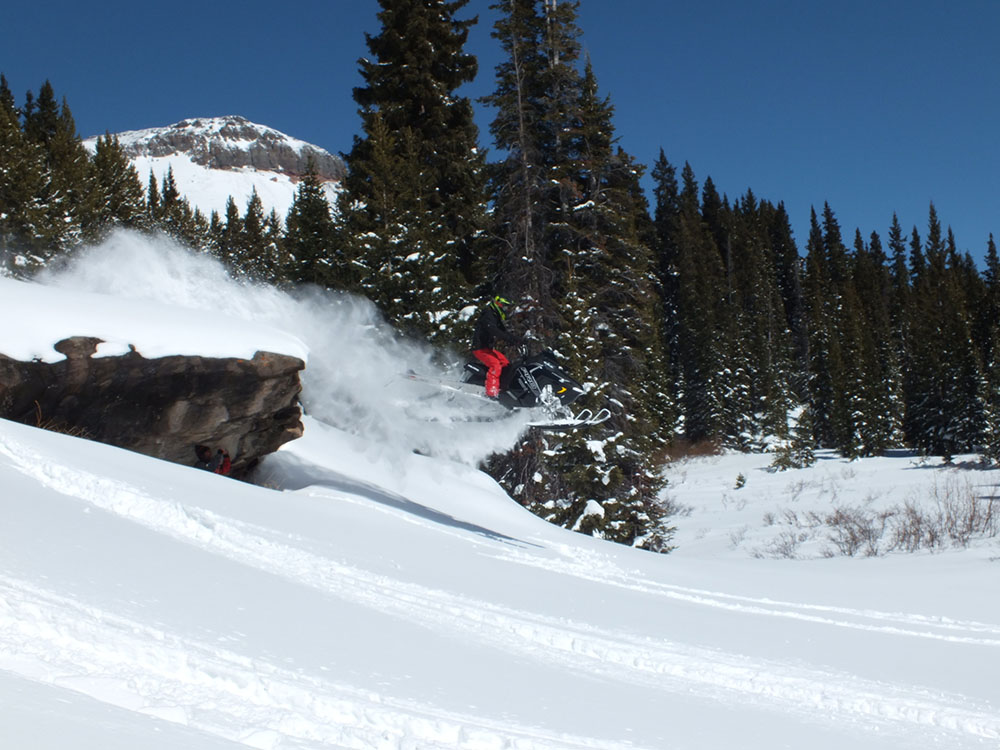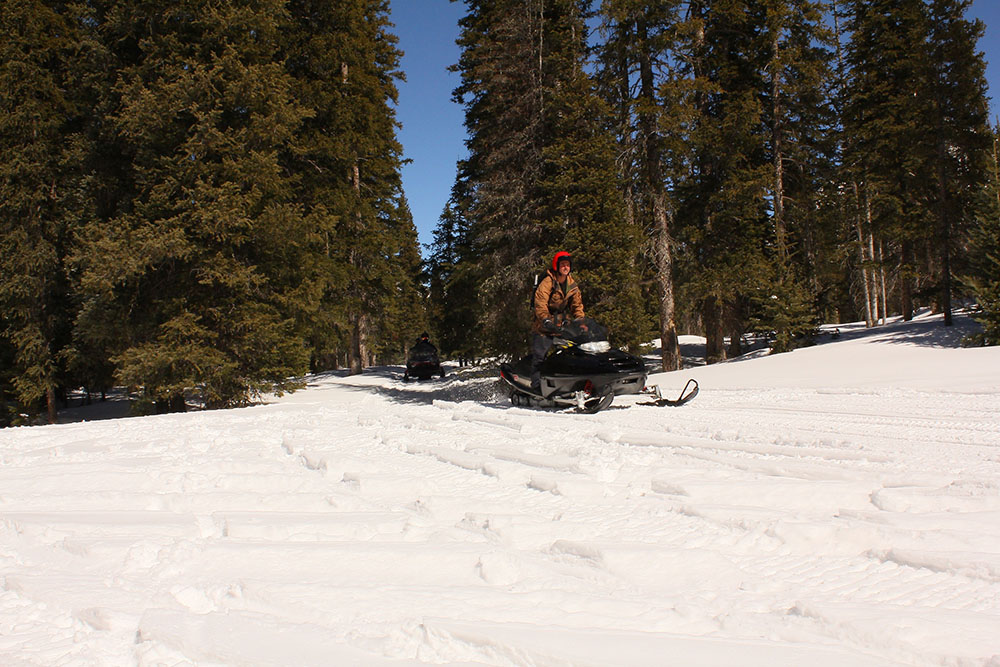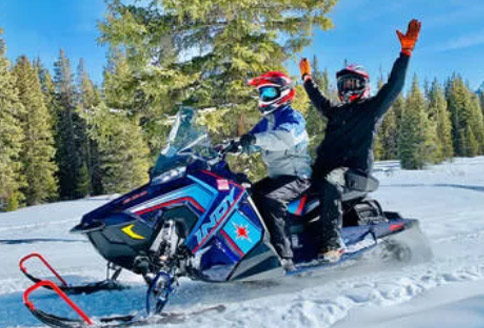Snowmobiling, a thrilling whirl through winter’s wonderland, offers an exhilarating escape into the snowy embrace of nature.
Picture this: a clear, crisp day, the silence of the forest around you, broken only by the soft crunch of snow underfoot and the distant call of a winter bird.
Then, the roar of engines as snowmobiles come to life, carving paths through untouched snow, leaving a trail of powder in their wake. It’s not just a sport; it’s an adventure, a way to explore the winter landscape in a way few other activities allow.
But with the rush of gliding over snowy trails comes a question of safety.
Is snowmobiling dangerous?
Like any outdoor adventure, it carries its risks, but with the right knowledge and preparation, it can be as safe as it is exhilarating.
Risks of Snowmobiling
When the wilderness calls and the snowmobile answers, it’s important to acknowledge the companion that rides along: risk.
The beauty of the snowy expanse comes with its hazards, each as silent and potentially deadly as a snowdrift.
Common hazards include hidden obstacles beneath the snow, like rocks or tree stumps, unpredictable ice thickness on lakes, and sudden weather changes that can disorient even the most experienced riders. Visibility can drop in an instant, and what was a clear path can suddenly become a maze of white and gray.
Snowmobile Accident Statistics
Statistics on accidents tell a cautionary tale. According to the International Snowmobile Manufacturers Association, there are over 1.2 million registered snowmobiles in the United States, and each year, these are involved in approximately 200 fatalities and over 14,000 injuries. While these numbers may seem daunting, they also highlight the importance of preparation and respect for the power of both the machine and the environment.
Navigating through these risks doesn’t mean steering clear of snowmobiling altogether. Rather, it’s about understanding and managing them, so the adventure remains thrilling for the right reasons. With our compass set on safety, our journey continues into the heart of preparation and precaution.
As with any other off-roading sport – snowmobile accidents happen.
But, if you take the proper safety precautions and wear the right protective gear, you can substantially decrease the risks involved with off-roading in the natural environment.
The leading causes of snowmobile accidents include alcohol use and excessive speed. You should avoid alcohol during your recreational activities to make sure you can react quickly to any unexpected situations in a remote area.
Safety Measures to Avoid Snowmobile Accidents
Embarking on a snowmobiling journey without the right essential gear is like setting sail without a compass. Your helmet is your true north, offering protection amidst the vast white. Equally important are goggles, which shield your eyes from the blinding snow glare, and appropriate winter clothing that keeps the biting cold at bay while allowing mobility. Don’t forget the avalanche beacon, a lifeline in the snowy depths, paired with a probe and a shovel for those venturing into backcountry terrain. This gear forms the armor against the elements and the unexpected.
Best practices for safe riding serve as the map guiding us through the snowy expanse. Always ride with a buddy; the wilderness, for all its beauty, is unpredictable.
Stay on marked trails, respecting the boundaries set for safety. Speed, the thrilling rush of the ride, can also be a foe; keeping it in check, especially in unfamiliar areas, ensures the adventure continues.
Lastly, be weather-wise; the winter sky can change its mood swiftly, so knowing when to turn back is as important as knowing how to start.

List of Snowmobile Safety Tips
To venture safely into the frosty embrace of the outdoors, consider these crucial snowmobile safety tips:
Wear Proper Safety Gear:
- Always wear a DOT-approved helmet. Head injuries can be avoided with the right helmet protection.
- Use goggles or a face shield to protect against wind and debris. Flying debris can be extremely unpredictable at a high speed.
- Dress in layers and wear water-resistant outerwear. Choose clothing carefully before each ride to maintain a comfortable body temperature.
- Consider wearing a snowmobile suit designed for warmth and mobility or insulated clothing to stay warm.
Pre-Ride Checks and Maintenance:
- Perform a pre-ride check on your snowmobile to ensure all parts are functioning correctly.
- Regularly maintain your snowmobile, focusing on the brakes, lights, and fuel system.
Ride With a Buddy:
- Never ride alone. Having a companion ensures assistance in case of emergencies.
Stay on Marked Trails:
- Use designated snowmobiling trails and avoid veering off into unmarked areas to reduce the risk of accidents and environmental damage.
Obey Speed Limits and Signs:
- Respect posted speed limits and signs. Excessive speed can lead to loss of control and accidents.
- Riding safely in the natural environment means being in control at high speeds to avoid serious injury.
Avoid Frozen Waterways:
- Unless you are certain of the ice thickness and stability, avoid riding on frozen lakes and rivers.
- Hypothermia is a leading cause of winter sport injuries and can quickly become an issue if you are exposed to a lake or river.
Be Weather Aware:
- Check the weather forecast before heading out and be prepared for changing conditions.
- Snowmobiling is in a natural environment subject to many unexpected obstacles with different weather conditions.
Carry Emergency Supplies:
- Include a first-aid kit, repair tools, a flashlight, and a fire-starting kit.
- Carry a fully charged mobile phone or a two-way radio for emergency communication.
Stay Sober:
- Alcohol and drugs impair your judgment and reaction time.
- Ride sober to ensure your safety and the safety of others. Stay safe by avoiding poor judgment with alcohol use during snowmobile adventures.
Respect Wildlife and the Environment:
- Keep a safe distance from animals and stick to trails to minimize environmental impact.
Educate Yourself:
- Consider taking a snowmobile safety course to familiarize yourself with best practices and local regulations.
- Consider any age restrictions set by local government.
By integrating these safety tips into your snowmobiling adventures, you not only protect yourself and your fellow riders but also ensure that the beauty and tranquility of the winter landscape can be enjoyed by all. Remember, preparation and prudence are your best companions on the snowy trails, guiding you through each journey with the promise of safe return and tales of wonder.
Training and Preparation
The essence of any great adventure lies in the preparation, and snowmobiling is no different. The importance of education cannot be overstated; knowledge is as crucial as the fuel in your snowmobile. Many states offer snowmobile safety courses, a blend of online and in-person sessions designed to equip riders with the knowledge of operation, safety practices, and environmental stewardship. These courses aren’t just about do’s and don’ts; they’re about understanding the soul of snowmobiling, ensuring every ride is a step closer to becoming a seasoned adventurer.
Resources for learning are as vast as the trails we aspire to explore. From online forums and communities sharing the lore of the trails to official guides and instructional videos provided by snowmobiling organizations, the wisdom of the snow is within reach. Engaging with these resources, attending local snowmobiling clubs, and even participating in guided tours can enrich the experience, making each ride not just safer but more fulfilling.

Conclusion on Snowmobile Safety
Balancing fun and safety on a snowmobile is like performing a delicate dance on the snow. It requires awareness, preparation, and respect for the machine and the majestic winter terrain.
Snowmobiling, with its inherent risks, also brings unparalleled joy, freedom, and a unique way to embrace the cold embrace of winter. By arming ourselves with the right knowledge, gear, and attitude, we turn potential dangers into mere elements of the adventure, each ride a story of exhilaration and careful respect for the wild.
As we throttle down and the engines quiet, the heart carries the echoes of our journey, a reminder that in the vast, open snowscapes, safety and preparation are the true keys to unlocking the purest form of adventure. Let the trails beckon, for with every ride, we become not just riders but stewards of the snowy realm, charting paths of responsibility and thrill in the winter’s heart.

